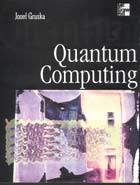
Jozef Gruska
Amazon
(online ordering)
Overview
Contents
Preface
About chapters
Figures
Corrections
About author
Related links
ISBN: 0-07-709503-0
Published: May 1999
Binding: Softcover
Pages: 439 - 246x189
Price: £34.99, DM73
- Fig. 2-22 (JPEG preview)
- Quantum network for binary addition(.eps)
- Fig. 2-23(JPEG preview)
- Gates for adders and subtractors (.eps)
- Fig. 3-3(JPEG preview)
- An implementation of QFT(.eps)
- Fig. 4-6(JPEG preview)
- Evolution in a partial QCA(.eps)



























































































